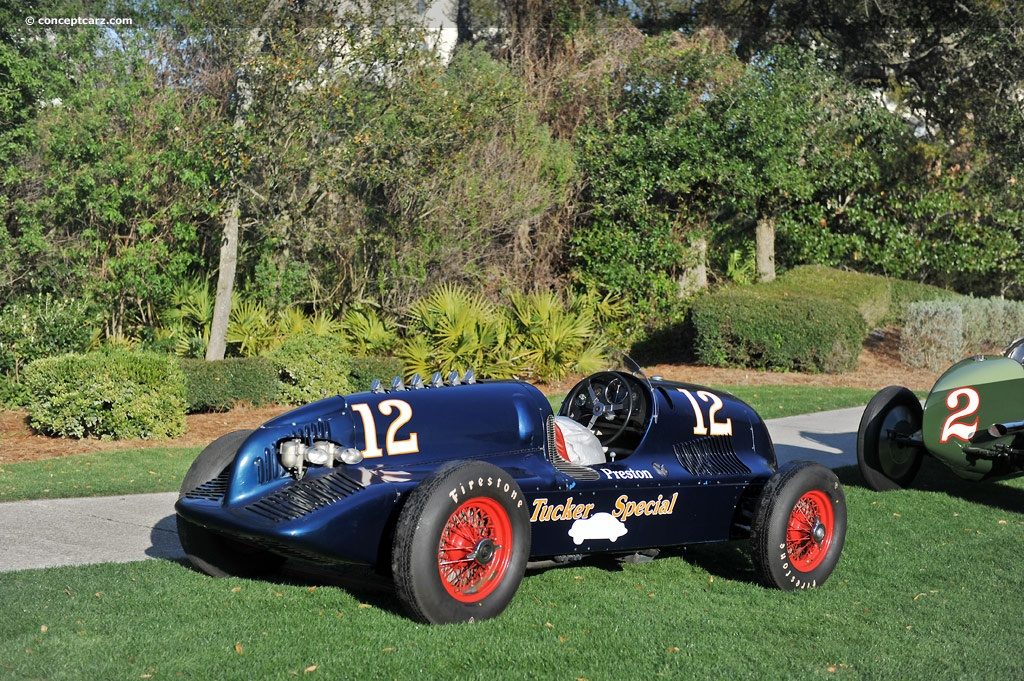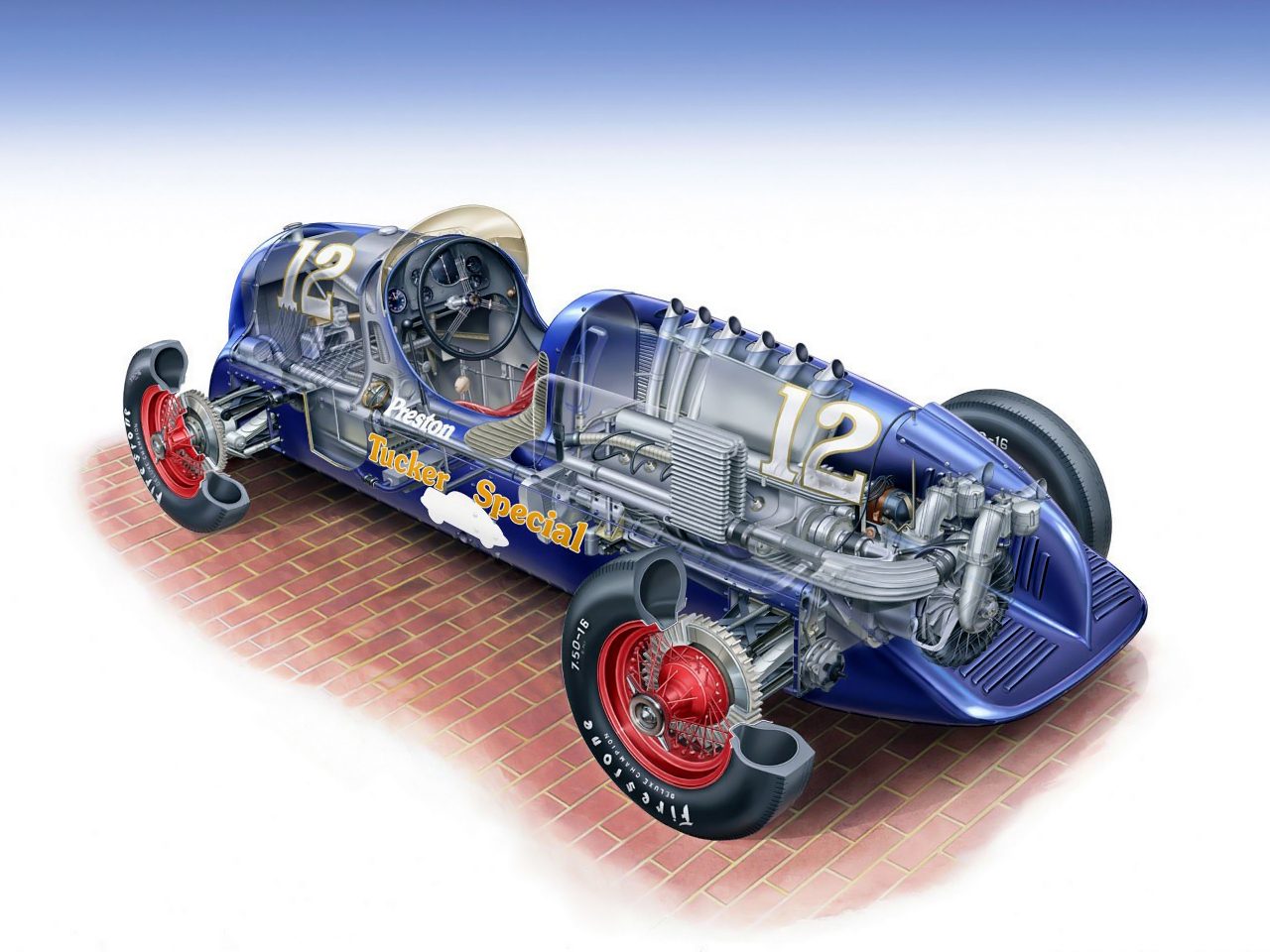This little racing car which was known as the Lightweight Special is here being driven by its co-designer George Dowson at the Cockfosters Rally, held on July 14, 1945, one of the first automotive events in England after the end of the war in Europe. Dawson’s partner in the design of the Lightweight Special was Alec Issigonis whose fame as an automotive engineer was assured when he designed the ground-breaking Mini-Minor for the British Motor Corporation in 1959.
The Lightweight Special had been built up by Issigonis, working in his home garage with Dowson between 1933-1938. The chassis was actually a very light and stiff monocoque structure of plywood sandwiched between aluminum panels, supported by steel cross-members. The suspension was all independent with swing axles in the rear and used rubber units instead of springs, an effective idea which was carried on to the Mini. The wheels were made of Elektron, a magnesium-aluminum alloy, thereby reducing unsprung weight. The power unit was a supercharged 750 cc Austin Seven motor (perhaps sourced from Issigonis’ own Austin Ulster) which postwar was replaced by an overhead cam 748 cc Morris engine which was substantially more powerful.
The Lightweight Special was very successful prewar with its Austin power, defeating even works-entered Austin-powered cars in hill-climbs and sprints. It still appears in historic car events to this day. Alec Issigonis was knighted in 1969 for his service to the British automobile industry and died in 1988.
Photo by Louis Klemantaski ©The Klemantaski Collection –
http://www.klemcoll.com







